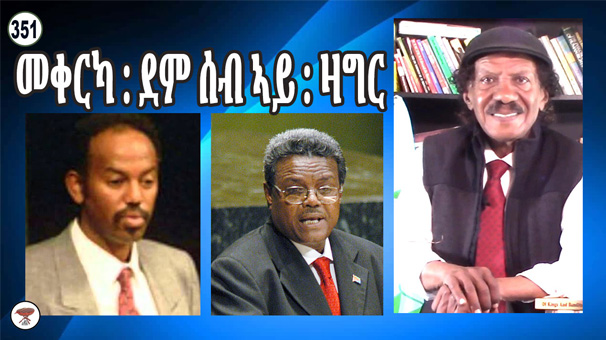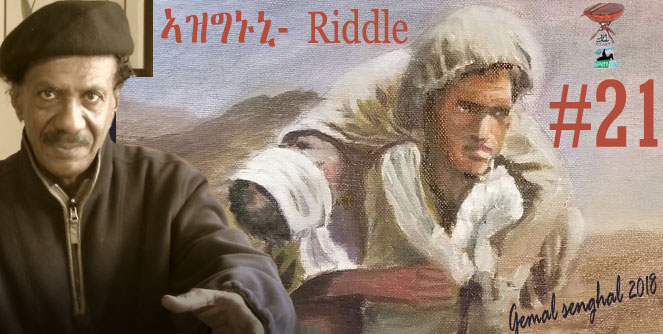Meqerka, Dem Sebaay, Zagir
In 1967, Israel and the Arabs (basically Egypt) fought the Six-Day War; Israel overran Egyptian territories and took control of the Sinai Peninsula and effectively closed the Suez Canal. Haim Bar-Lev, the Israeli chief of staff, designed a 120 km long ditch and about 20 meters high dirt fortifications. Along the Bar Lev Line, Israel built about 20 posts to monitor Egyptian movements. The skirmishes finally calmed, and the Bar Lev line became a ceasefire line.
It took Egypt six years to rebuild its forces and get ready to fight and reclaim its territories. In October 1973, Egypt started the Ramadan War—Israel calls it Yom Kippur. The Egyptians crossed the canal in a surprise attack. Followed by deployment of heavy-duty water pumps opening a passage to Sinai. They breached the Bar Lev defense line and gained control of territories in Sinai. They opened the canal eight years later, in 1975.
In Eritrea we had an imaginary line that separated the PLF and ELF controlled areas—it was the Asmara-Keren asphalt road. My assignment was to cross that line and take the reporters to the PLF areas. It was in the middle of the potato famine.
Potato Famine
Hamassen was in the grip of a severe famine. The region was devastated by war—villages stood empty, their people and cattle gone. Many sought refuge in remote mountain hamlets, while the young joined the liberation struggle in masses. Farming had nearly ceased, leaving the land desolate. Only a few stubborn villagers remained, surrounded by silence and death. Food was so scarce that both mental and physical agony became colossal.
The reporters I accompanied had run out of canned food, but the impoverished villagers still shared what little they had with them and the combatants—especially ensuring the “white guests” were cared for. But soon, even that meager food supply was depleted.
The ELF supplied potatoes from a store in the Karneshim area—almost the only staple food available; we got a ration of three potatoes each per day—barely enough to survive. But the PLF was better off; the Karneshim area, its stronghold, kept them relatively well-fed.
In the 19th century Ireland was hit by a famine caused by a crop blight. It was known as the Great Hunger or the Irish Potato Famine. Eritrea’s famine wasn’t due to a single crop failure but to the collapse of all farming. The Irish migrated to America, but Eritreans had no such escape. They were surrounded by equally famished neighbors. It seemed the Irish famine had merely changed its address by moving to Eritrea, where potatoes were treated with reverence—like a mother protecting the cow milk that fed her babies.
Berhane, a combatant from the supply unit, oversaw the Meqerka supply store that was stocked with nothing significant except potatoes. He kept a ledger recording donkey loads of the humble potato. When supplies were good, he’d sneak in an extra potato or choose the larger ones for us. But boiling potatoes required firewood—a greater rarity than food itself. The barren mountains offered only a few twigs of tahses, shrubs that produced more smoke than heat, making the kitchen resemble a coal shaft, blackened with soot.
It was during my stay in Hamassen that Berhane’s boss, Hadgu, together with his colleague Nebiat, was killed by disgruntled ELF insurgents known as falool—anarchists who later fled to the PLF side.
A kind woman stayed in Meqerka, boiling water all day to boil our potatoes. We sat silently in her smoke-filled kitchen, clutching our prized potatoes like beggars waiting for alms. Too weak to talk, we waited our turn to place them in the pan before the firewood vanished. When ready, she spread the potatoes on the ground, and we picked three potatoes—pretending we could recognize our own.
The kind woman treated us like her children, fighting back tears as she murmured prayers. But we barely heard her prayers; we were searching for anyone with salt—a pinch could transform a tasteless half-boiled potato into a feast. Half-cooked potatoes left us bloated and sick, but since bloating was inevitable, it is preferable to be bloated with potatoes seasoned with salt. We ate in silence inside that smoky cave of a kitchen.
Corrections and Addendum: In my last episode, I forgot to include Yassin’s full name. It’s Yassin Adem, a veteran and ex-prisoner freed during the daring ELF rescue operation.
Dem Sebaay
It was time to move to Dem Sebaay—one of the most beautiful villages I’ve ever seen. Perched atop a hill along the Asmara–Keren railway, its southern edge was marked by massive rock formations glistening with slow trickles of fresh water—more soothing than a waterfall. I can’t help but wonder, is it still the same? Many places I knew have changed; their water sources have gone dry.
We spent hours with Nicholas, sitting on the rocks. I was still haunted by the Ona Massacre and would answer his questions in exhausting detail. He was obsessed with his dream of buying a catamaran to sail the world.
During one such conversation, he asked, “What does Temaharay mean?”
“It means student,” I replied.
“Then I’ll name my boat Student,” he said.
Days later he asked, “What is ‘teacher’ in Tigrinya?”
“Memhir,” I said.
“Good,” he smiled, “the next boat will be Memhir.”
In the 1980s, I tried to find them—to retrieve copies of the photographs they took—but failed. I reached Gwynne Roberts twice; he said he had boxes full of pictures and would look for mine. He never did. I was disappointed. I thought, being a journalist, he would understand how precious those photos were to me. Even in the age of the Internet, he never shared them.
Hooray—PLF and ELF United!
We were still in Dem Sebaay when we heard the news: the unity meeting in Khartoum had concluded. We were jubilant! Hamid Mahmoud was all smiles. Nicholas seized the opportunity and asked Hamid if they could visit the PLF. “Of course,” he said.
We loaded a donkey with 35 mm film canisters and supplies and set out to TseHaf Lam at dusk. By dawn we crossed the asphalt road into Weki, a PLF post. Our meeting with the PLF leaders was set for the afternoon.
Nicholas was thrilled to interview them; it was an opportunity for breaking news. But Jerom was visibly overjoyed; the cadres had brought us a combatant who spoke French. Jerom’s attitude changed. “The ELF is too provincial,” he said, “but with the PLF, they brought us a lady who speaks Française!”
In the afternoon, we met Ali Sayed Abdella and Petros Solomon at a secluded house.
Breaking News That Broke My Heart
In the afternoon, we walked a short distance to meet the leaders—I was excited; I already considered them our leaders. After all, we were united!
They received us politely but stayed distant, even cold. I couldn’t hide my excitement: “Mebrouk! Finally, it’s done!”
Ali chuckled with a smirk; Petros looked at me with pity. They quickly shattered my illusion. They said the Khartoum meeting meant nothing to them—it was “a meeting of rejected ex-leaders.” Their words were laced with the ideological jargon of the time—reactionary, progressive, and reformist. I concluded the PLF has split, and we have two factions.
I froze. My mind replayed the jubilation I had witnessed among ELF combatants. The news broke me.
As history later showed, Isaias’s “field leadership” rejected the agreement, held a congress in 1977, rebranded as the EPLF, and introduced a new flag—the forerunner of today’s national flag.
The next morning, our tea was interrupted by the sound of machine guns and explosions—the battle of Afdeyu had begun. We all rushed toward the front…
Unfortunately, it’s time to stop here—until we continue in the next Negarit.




Awate Forum